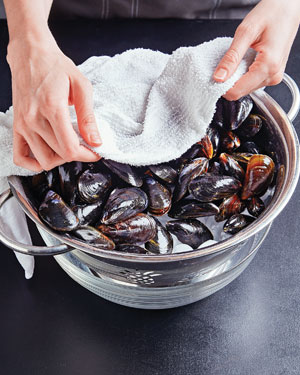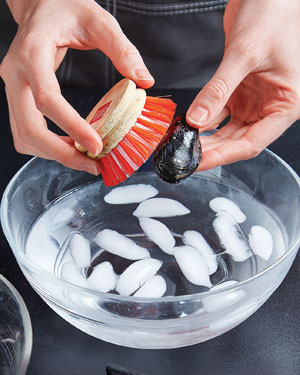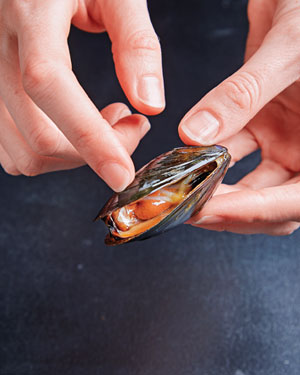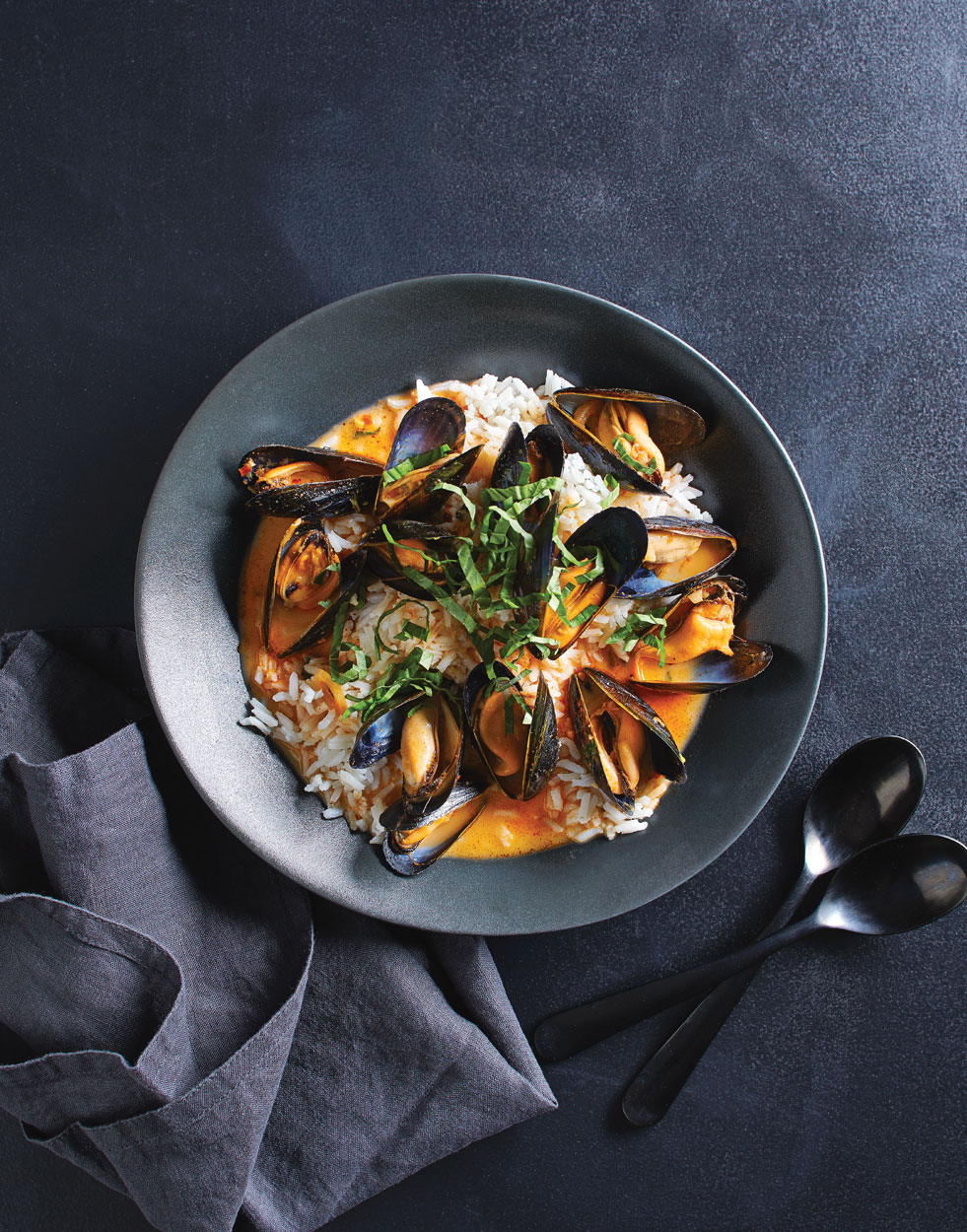Why (and How) You Should Be Eating Mussels
Sometimes called the poor man’s oyster, mussels should not be overlooked. Super nutritious and planet-friendly, they’re more than worthy of your time and attention. Just follow a few easy steps for at-home mussel success.

Why You Should Eat Mussels
Mussels (especially farmed mussels) are one of the most sustainable proteins you can buy. That’s happy news for the planet, and mussels are a healthy choice for the body as well. Low in fat and high in protein, mussels are an excellent source of Vitamin B12, which keeps nerve and blood cells healthy. They deliver a good amount of iron, too, which is a key component of hemoglobin, the protein in red blood cells that moves oxygen throughout the body. And with Omega 3s, Vitamin C, and good fats to boot, mussels deserve a spot on your list of health superfoods.
How to Store and Clean Mussels
Many of us like mussels, but eat them only in restaurants because we don’t know how to handle them at home. But it’s nothing to be afraid of. First, know that mussels are alive (or should be) when you buy them. You want to keep them that way until you cook them. It’s all simple stuff, and once you know what to do, you’ll want to incorporate these bivalve mollusks into your repertoire, often.
 Step 1: Store mussels on ice in a colander so melted ice can drain away. Cover with a damp towel and refrigerate for no more than three days.
Step 1: Store mussels on ice in a colander so melted ice can drain away. Cover with a damp towel and refrigerate for no more than three days.
 Step 2: Scrub shells with a stiff-bristled brush to remove any dirt. Then rinse cleaned mussels in water to flush out any sand in the shell.
Step 2: Scrub shells with a stiff-bristled brush to remove any dirt. Then rinse cleaned mussels in water to flush out any sand in the shell.
 Step 3: Just before cooking, tap any open mussels. If they’re alive, they’ll close their shells and are good to use. If they don’t close, discard them.
Step 3: Just before cooking, tap any open mussels. If they’re alive, they’ll close their shells and are good to use. If they don’t close, discard them.
 Step 4: You want to remove any beards hanging from the shell — simply pull them towards the small end of the shell with your fingers.
Step 4: You want to remove any beards hanging from the shell — simply pull them towards the small end of the shell with your fingers.
Should You Follow the “R” Rule for Mussels?
There’s an old rule of thumb that says you should only eat oysters, as well as clams and mussels, during months that have an R in the name. There were a few good reasons for this rule, including the lesser quality of bivalves during their summer spawning season, as well as an increased risk during warmer months of toxins that can cause seafood sickness. But thanks to advancements with aquaculture and refrigeration, we don’t strictly adhere to this rule anymore — although oysters and other bivalves like clams and mussels are, generally speaking, at their best in the colder months. You should also always be sure to buy your shellfish from a reputable source, store it properly, and use it quickly.
So, now that you know the rules, find yourself some mussels and grab a recipe, below, for a meal that's sustainable, nutritiuos, affordable, and amazingly good.
Grab a Great Recipe for Mussels
Product Recommendations
Interested in cooking? Need some supplies?
Check out some of the tools we like. All products featured on Cuisine at Home are independently selected by our editors; we may earn an affiliate commission from qualifying purchases through our links.
